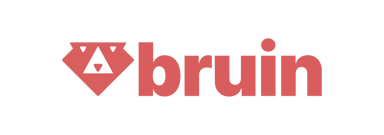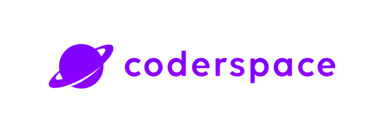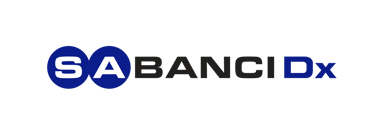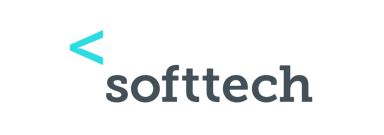Organizational Culture
Organizational culture is the blend of beliefs, values, attitudes, and behaviors that shape how an organization functions day to day. It’s usually seen as the company’s personality or the unspoken rules that guide how people work together and make decisions.
From small daily interactions to big strategic moves, culture influences every part of work life. It creates an invisible thread that connects everyone’s actions and choices within the organization.
It includes👇:
- Shared values and beliefs that guide decision-making at all levels
- Communication patterns between departments and hierarchies
- Decision-making processes across different organizational levels
- Work practices and norms that define acceptable behavior
- Behavioral expectations for both leaders and employees
- Traditions and rituals that reinforce cultural values
- Social dynamics and team interactions
- Problem-solving approaches and innovation mindset
- Recognition and reward systems
Unlike formal policies and procedures, organizational culture usually operates on an unconscious level, influencing how employees think, act, and interact without explicit direction. It's when new employees quickly learn and adapt to how things usually are in this organization, either through formal orientation or informal observation.
The Importance of Organizational Culture in HR
For HR professionals, organizational culture is at the heart of many key functions and outcomes. Actively understanding and shaping culture is essential for driving success and building a lasting competitive edge. 📌
Talent Acquisition and Retention
- Attracts candidates who align with company values and mission
- Reduces turnover by creating a positive work environment
- Improves employer branding and reputation in the job market
- Decreases recruitment costs through improved candidate fit
- Creates natural brand ambassadors among satisfied employees
- Facilitates easier onboarding through clear cultural expectations
Employee Engagement
- Fosters higher levels of job satisfaction and workplace happiness
- Promotes stronger team collaboration and cross-functional cooperation
- Increases workplace motivation and productivity through shared purpose
- Builds stronger connections between employees and the organization
- Encourages proactive problem-solving and innovation
- Creates a sense of belonging and community
- Supports mental health and well-being through positive workplace relationships
Performance and Innovation
- Drives better business outcomes through aligned effort
- Encourages creative thinking and novel problem-solving approaches
- Supports continuous improvement initiatives across the organization
- Facilitates knowledge sharing and organizational learning
- Promotes adaptability and resilience in facing challenges
- Creates an environment where calculated risks are encouraged
- Builds customer-centric mindsets that drive service excellence
Key Components of Organizational Culture
For HR professionals, understanding the key elements that shape organizational culture is essential. Together, these pieces form the unique cultural 'fingerprint' of the organization. 🔑
1. Leadership Style
The way leaders interact with employees, make decisions, and guide the organization sets the tone for the entire culture. This includes:
- Decision-making transparency
- Accessibility and approachability
- Delegation and empowerment practices
- Crisis management approaches
- Recognition and feedback styles
- Vision communication and inspiration
- Change management techniques
2. Communication Patterns
How information flows throughout the organization, including:
- Formal vs. informal channels of communication
- Transparency levels in sharing information
- Feedback mechanisms for continuous improvement
- Meeting structures and effectiveness
- Cross-departmental collaboration methods
- Digital communication tools and practices
- Conflict resolution approaches
- Knowledge sharing platforms and practices
3. Core Values
The fundamental beliefs and principles that guide organizational behavior and decision-making, encompassing:
- Ethical standards and integrity
- Customer service philosophy
- Innovation mindset
- Quality standards
- Social responsibility
- Environmental stewardship
- Diversity and inclusion principles
- Professional development commitment
4. Work Environment
Physical and psychological aspects of the workplace, including:
- Office layout and design considerations
- Remote work policies and practices
- Work-life balance initiatives and support
- Social interaction opportunities and team building
- Wellness programs and health support
- Ergonomic considerations
- Collaborative spaces and quiet zones
- Technology infrastructure and tools
5. Policies and Procedures
The formal rules and guidelines that shape behavior and expectations within the organization, covering:
- Performance management systems
- Career development pathways
- Compensation and benefits structures
- Leave and flexibility policies
- Training and development programs
- Safety and security protocols
- Compliance requirements
- Diversity and inclusion initiatives
Types of Organizational Culture
Clan Culture
- Family-like atmosphere emphasizing belonging
- Strong emphasis on mentoring and personal development
- High employee engagement through collaborative approaches
- Collaborative decision-making at all levels
- Focus on team building and morale enhancement
- Long-term commitment to employee growth
- Supportive leadership style
- Strong internal communication
- Emphasis on tradition and loyalty
Adhocracy Culture
- Innovation-driven environment that embraces change
- Risk-taking encouraged and failures viewed as learning opportunities
- Entrepreneurial spirit fostered throughout the organization
- Adaptive and flexible response to market changes
- Emphasis on individual initiative and creativity
- Rapid decision-making processes
- Focus on future opportunities
- Dynamic project teams
- Continuous experimentation
Market Culture
- Results-oriented focus driving performance
- Competitive atmosphere encouraging excellence
- Goal-driven operations with clear metrics
- External success metrics and benchmarking
- Performance-based rewards and recognition
- Strong customer focus
- Market leadership emphasis
- Data-driven decision making
- Achievement-oriented mindset
Hierarchy Culture
- Structured environment with clear roles
- Clear procedures and policies guiding work
- Stability-focused operations and planning
- Formal relationships and communication channels
- Efficiency-driven processes and systems
- Risk-averse decision making
- Strong quality control measures
- Standardized procedures
- Clear reporting lines
Assessing and Measuring Organizational Culture
Understanding your current organizational culture requires systematic assessment using various tools and methods 📊:
Quantitative Methods
- Employee surveys and questionnaires measuring cultural dimensions
- Performance metrics analysis linking culture to outcomes
- Turnover rate tracking and pattern analysis
- Engagement scores across departments and levels
- Cultural assessment tools and frameworks
- Productivity metrics evaluation
- Customer satisfaction correlations
- Financial performance indicators
- Recruitment and retention statistics
Qualitative Methods
- Focus group discussions exploring cultural experiences
- One-on-one interviews with employees at all levels
- Observational studies of workplace interactions
- Exit interviews analyzing cultural factors
- Cultural audits examining practices and behaviors
- Story collection and analysis
- Leadership feedback sessions
- Customer feedback analysis
- Workplace observation studies
Building and Strengthening Organizational Culture
Creating and maintaining a strong organizational culture requires deliberate effort and strategic planning 👌:
1. Leadership Alignment
- Ensure leadership behaviors consistently reflect desired culture
- Provide comprehensive cultural training for managers
- Create accountability for cultural initiatives and outcomes
- Model desired behaviors consistently and visibly
- Develop cultural champions among leadership
- Regular leadership alignment sessions
- Cultural impact assessment in decision making
- Continuous feedback loops
2. Communication Strategy
- Clearly articulate cultural values and expectations
- Maintain transparent communication channels at all levels
- Share success stories and cultural wins regularly
- Foster open dialogue between departments and levels
- Develop clear cultural messaging
- Create cultural communication guidelines
- Establish regular culture-focused meetings
- Implement feedback mechanisms
3. Employee Engagement
- Involve employees in cultural initiatives and planning
- Recognize and reward cultural ambassadors regularly
- Create multiple opportunities for feedback and input
- Implement suggestion systems for improvement
- Develop cultural engagement programs
- Create employee resource groups
- Establish mentoring programs
- Regular culture-building activities
4. Onboarding and Training
- Integrate cultural elements into onboarding processes
- Provide ongoing cultural training and reinforcement
- Develop cultural mentorship programs for new hires
- Create comprehensive cultural orientation materials
- Design culture-specific training modules
- Establish cultural competency programs
- Regular cultural refresher sessions
- Peer learning opportunities
5. Measurement and Adaptation
- Regular culture assessments and surveys
- Comprehensive feedback collection and analysis
- Adaptation strategies for changing needs
- Continuous improvement initiatives
- Performance metric tracking
- Regular culture audits
- Adjustment of initiatives based on data
- Impact assessment of cultural programs
Organizational culture is a critical factor in organizational success that requires constant attention and nurturing from HR professionals.
Cultural change takes time and commitment, but the rewards of a strong, positive organizational culture are worth the investment. As HR professionals, your role in shaping and maintaining organizational culture is crucial for both employee satisfaction and business success.
Organizations can create an environment where employees thrive, innovation flourishes, and business objectives are consistently met by focusing on building and maintaining a strong culture. ⭐️
Get a demo
- Quickly find top candidates with smart application management
- Improve team collaboration using built-in communication and workflows
- Offer a smooth candidate experience to strengthen your employer brand
- Count on 24/7 support for a hassle-free hiring process
- Quickly find top candidates with smart application management
- Improve team collaboration using built-in communication and workflows
- Offer a smooth candidate experience to strengthen your employer brand
- Count on 24/7 support for a hassle-free hiring process
"We truly felt the speed difference. Everything was smoother, and candidate feedback was much more positive. It made our jobs easier."

Trusted by 100+ teams
Get Informed,F.A.Q.
Revolutionize your hiring process with our transformative Applicant Tracking System (ATS.)
Suggested keywords
What is Cultural Fit?
Let's talk numbers - 89% of employers put cultural fit at the top of their hiring checklist. Pretty huge. But wait a second... what exactly does cultural fit mean in today's fast-moving workplace?The ...
Employee NPS Benchmarks
An Employee NPS benchmark is basically a way to see how your company’s employee satisfaction stacks up against others. It helps turn your eNPS score into something useful by giving it context. 📌You'r...
Salary Benchmarking
Salary benchmarking is basically figuring out if what you're paying your team makes sense compared to what others are offering for similar roles. It’s like checking the going rate before you buy somet...















